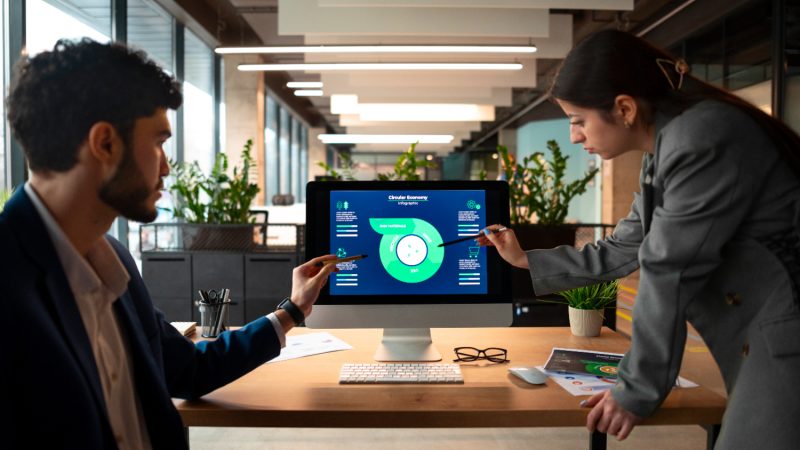The Role of Time Management in Overcoming Remote Work Distractions

Work distractions are estimated to cost U.S. businesses around $650 billion annually. Unlike in an office, remote employees face constant interruptions, such as family, social media, and more. They not only impact individual productivity but also disrupt timelines and team momentum.
How can you help your team stay focused outside the office?
In this article, you’ll discover how strong time management practices and tools like a time monitoring app can support your team. These strategies help build routines that keep everyone on track and performing at their best wherever they’re working.
The Challenges Of Trying to Maintain Focus In Remote Setting
Without an office structure, focus can easily drift, affecting employee productivity and overall business performance.
- Limited Oversight on Focus: In a remote setting, you don’t have the same visual cues as in an office, making it harder to gauge if team members are staying focused or getting sidetracked by non-work tasks.
- Challenges in Maintaining Consistency: Some team members may find it difficult to stay consistently focused outside of the office. The ease of switching to household tasks or social media can pull attention away from work.
- Impact on Deadlines & Deliverables: Every distraction takes away time from priority tasks, which, over time, can delay individual progress and disrupt the entire team’s workflow.
- Difficulties in Establishing Boundaries: At home, the lines between work and personal life are often blurred, leading to frequent, unintended breaks that wouldn’t occur in an office.
Time Management Techniques to Boost Remote Team Efficiency
To help your remote team tackle distractions, you’ll need real, proven tactics that add some structure to their days. Here are a few solid ways to keep them focused, productive, and engaged:
Implement Time-Blocking Techniques
Encourage your team to allocate specific blocks of time for focused work. Time-blocking involves setting aside uninterrupted periods for specific tasks, with breaks in between to recharge. You can support this by setting team-wide time-blocked hours, especially for complex projects or “deep work” that requires full attention.
Lead by example and share your time-blocking template or routine with your team. Outline when you’ll be working on specific tasks and when you’re available for check-ins. Doing this will create a culture of dedicated work periods that everyone can respect.
Use Pomodoro Technique
Research shows that the Pomodoro Technique can boost productivity by up to 25% , helping employees stay focused and cut down on mental fatigue.
It’s a simple method of working for 25 minutes and taking a 5-minute break. This rhythm can help your remote team manage time better and stay engaged with smaller tasks. The structured cycle of work and rest is especially useful for those who struggle with focus or feel daunted by big tasks.
Consider hosting a group Pomodoro session during busy periods. This will foster a sense of shared focus, help everyone build resilience against distractions, and maintain steady progress on their to-do lists.
Set Clear Communication Protocols to Reduce Interruptions
Establish team guidelines for communication to minimize interruptions. For example, set expectations around response times by informing team members that immediate replies aren’t necessary outside of specified “check-in” hours. This structure reduces the need for constant check-ins and helps team members stay focused without the pressure of instant communication.
Encourage the use of asynchronous communication, such as recorded video updates or shared documents, to keep everyone informed without the disruption of additional meetings. By prioritizing meaningful interactions and reducing unnecessary ones, you’re supporting a smoother, more focused workflow.
Implement an Employee Monitoring Tool
One of the best ways to cut down on distractions in remote work is by using employee monitoring software. This tool can make a real difference by helping you:
- Identify Optimal Work Periods: Use a monitoring tool to pinpoint when each team member is most productive. Schedule high-priority tasks during these peak hours to align with natural productivity rhythms.
- Encourage Time Awareness & Accountability: Monitoring tools offer visibility into app and website usage, helping team members stay mindful of their work habits. This fosters self-accountability and encourages effective time management without heavy supervision.
- Balance Workloads to Maximize Focus: Monitoring data reveals workload distribution, allowing you to spot bottlenecks or potential burnout. Adjust tasks as needed to ensure everyone has the time and energy to focus fully on their work.
Conclusion
Managing time well in remote work is essential to keep your team focused and get things done. By using monitoring tools and tapping into workforce data, you create a setup that supports engagement and accountability.
These practices lift team performance and build a steady, distraction-free environment that helps everyone thrive in the long run.
https://tagteam.harvard.edu/hub_feeds/4645/feed_items/12022187






